What Actually Makes Painting Expressive
Expression isn't something you set out to create. You don't wake up and say 'Today I'm going to paint expressively.' Real expression happens naturally when the right conditions are in place - and those conditions have more to do with confidence than technique.

Expressive painting isn't something you set out to create. You don't wake up and say "Today I'm going to paint expressively." Real expression happens naturally when the right conditions are in place - and those conditions have more to do with confidence than technique.
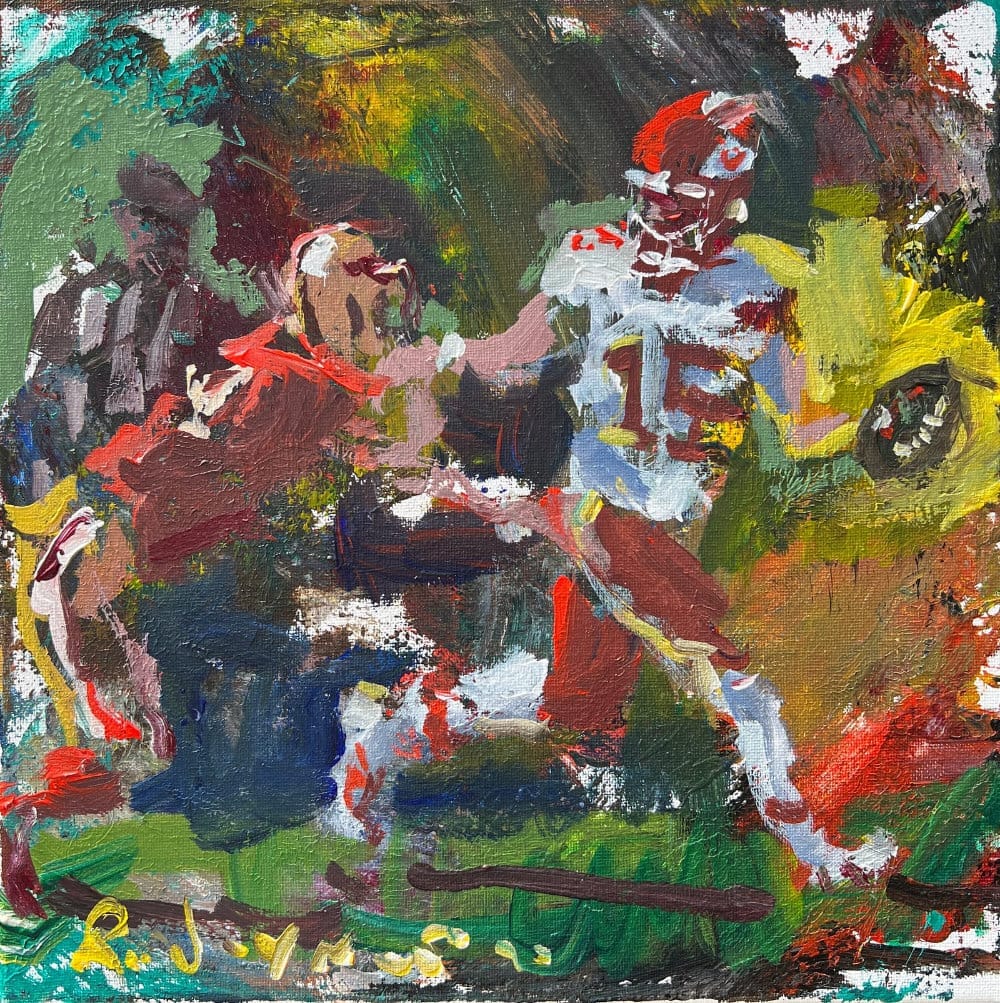
The Foundation That Makes Expression Possible
Here's what I've learned through years of studio work: expressive painting emerges from solid fundamentals, not from dramatic brushwork.
You need good drawing skills, understanding of color relationships, and grasp of composition principles. Not because these create expression, but because they give you the confidence to respond freely to what's happening on your canvas. When you understand the basic structure of your subject - whether it's a Tabasco bottle or a coastal landscape - you can afford to be loose with the details.
Without that foundation, you're not being expressive. You're just being random and hoping for the best.
Study the image above: The complex figure work and sense of action in this expressive football art is only possible because of solid drawing fundamentals underneath. Those skills give me the confidence to paint loosely while maintaining the essential gesture and movement.
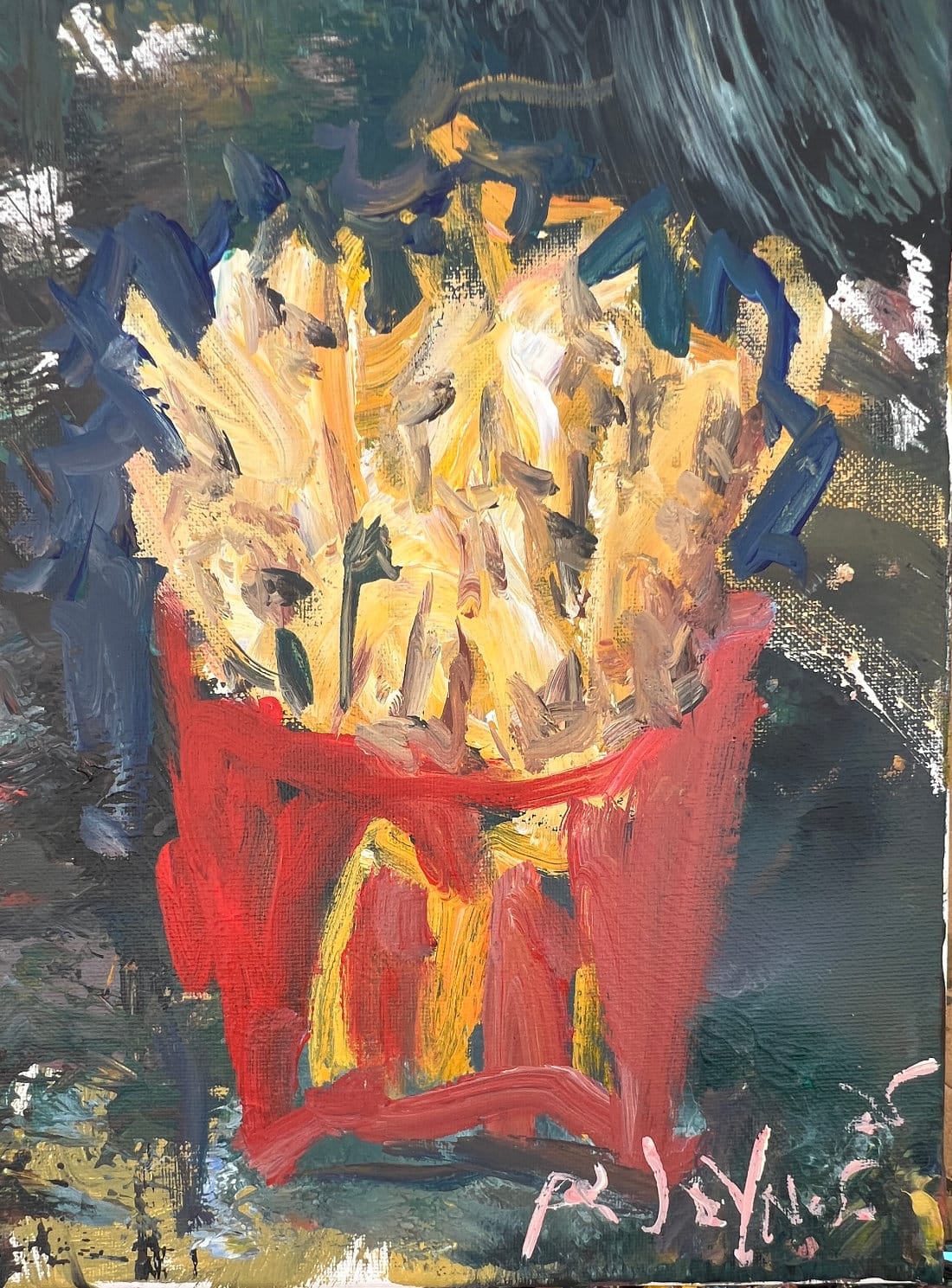
Confidence Plays the Crucial Role
That solid foundation breeds confidence, and confidence is what allows you to paint loosely. When you know you can draw that ketchup bottle's basic proportions, you don't have to be precious about every brushstroke. You can respond to happy accidents, work over areas that aren't quite right, and let the painting evolve naturally.
This is why my starting methods work - using the canvas as a palette, working over rejects, adding collage elements. These approaches force you into responsive mode, but they only work if you have enough skill to navigate the challenges they create.
Study the image above: This kind of confident, minimal brushwork only comes from thousands of hours of painting experience. I can capture the essence of the subject with just the essential strokes because I'm completely comfortable with both the medium and the food art subject matter.
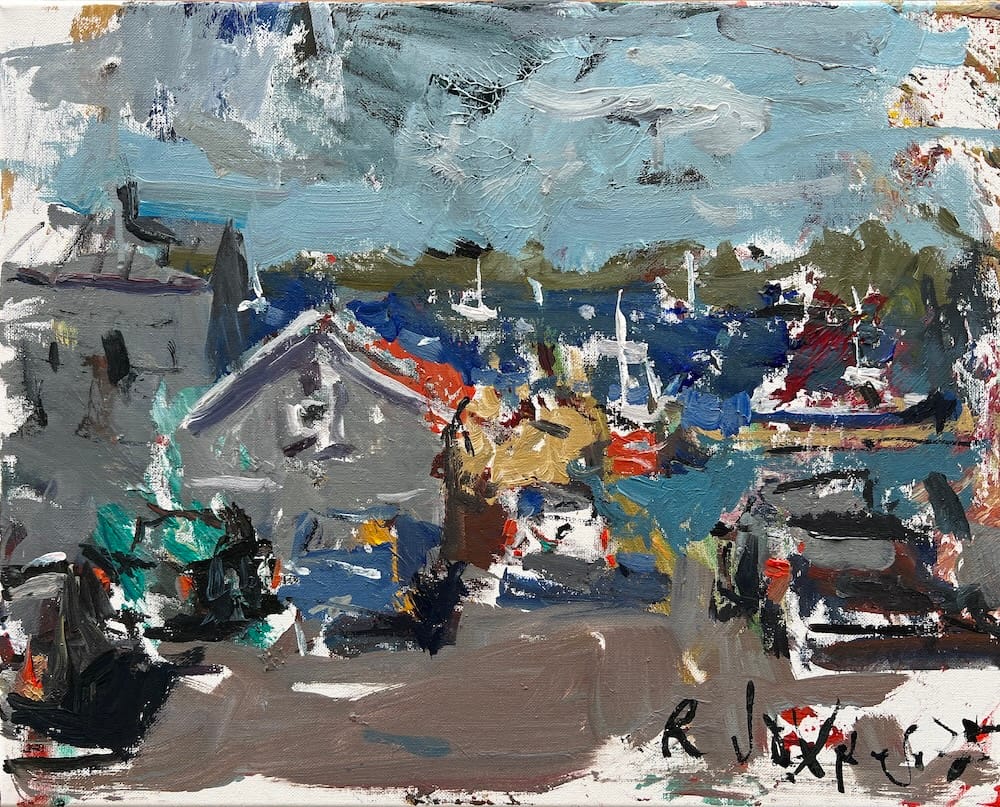
The Energy That Can't Be Faked
The final ingredient is something that happens naturally when you're genuinely engaged with the painting process: emotional energy. This could be joy, excitement, even frustration. Frustration actually reads remarkably well in paintings because it represents authentic engagement with the work.
This emotional energy isn't something you can manufacture or decide to include. It emerges when you're absorbed in solving the visual problems in front of you, responding to what's working and what isn't, fighting with passages that won't cooperate.
Study the image above: You can recognize the harbor scene and individual elements, but notice how some areas are allowed to 'fall apart' while maintaining just enough structure to hold together. This balance comes from understanding the fundamentals well enough to know what you can safely ignore.
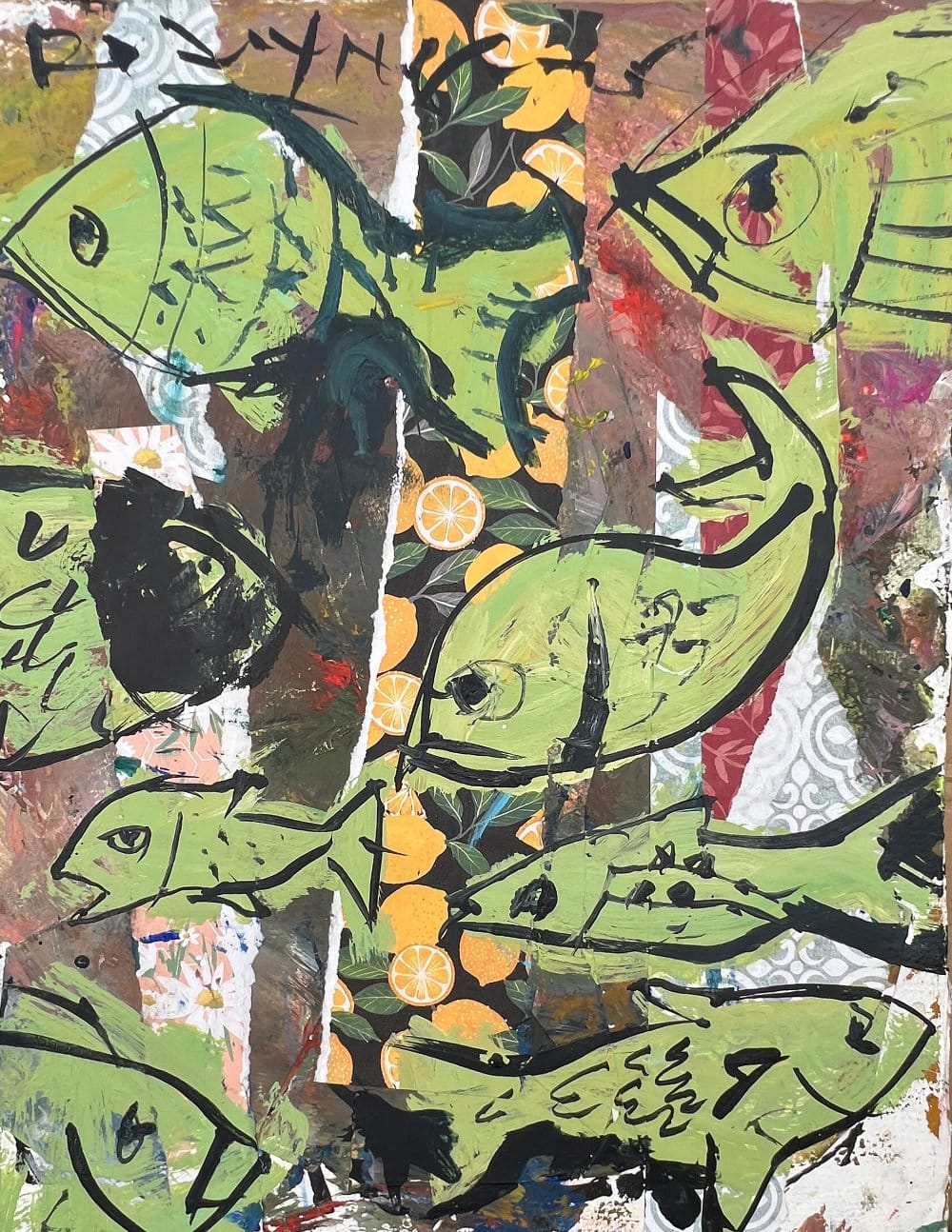
Why Brushwork Is the Result, Not the Goal
Notice I haven't talked much about brushwork techniques. That's intentional. The energetic, confident brushstrokes that characterize expressive painting are a result of the painting process, not an intentional stylistic choice.
When you're focused on responding to color relationships, solving compositional problems, or working with unexpected accidents, your brush naturally moves with more conviction than when you're trying to make "expressive" marks for their own sake.
Study the image above: The energetic black line work and varied mark-making here emerged naturally while solving the compositional challenge of multiple overlapping fish. I wasn't trying to make expressive marks - I was focused on the painting problems, and the brushwork energy came as a result of necessity. The lime green slapped across the collage background developed contrast, and the calligraphic line work had to happen to make the fish identifiable.
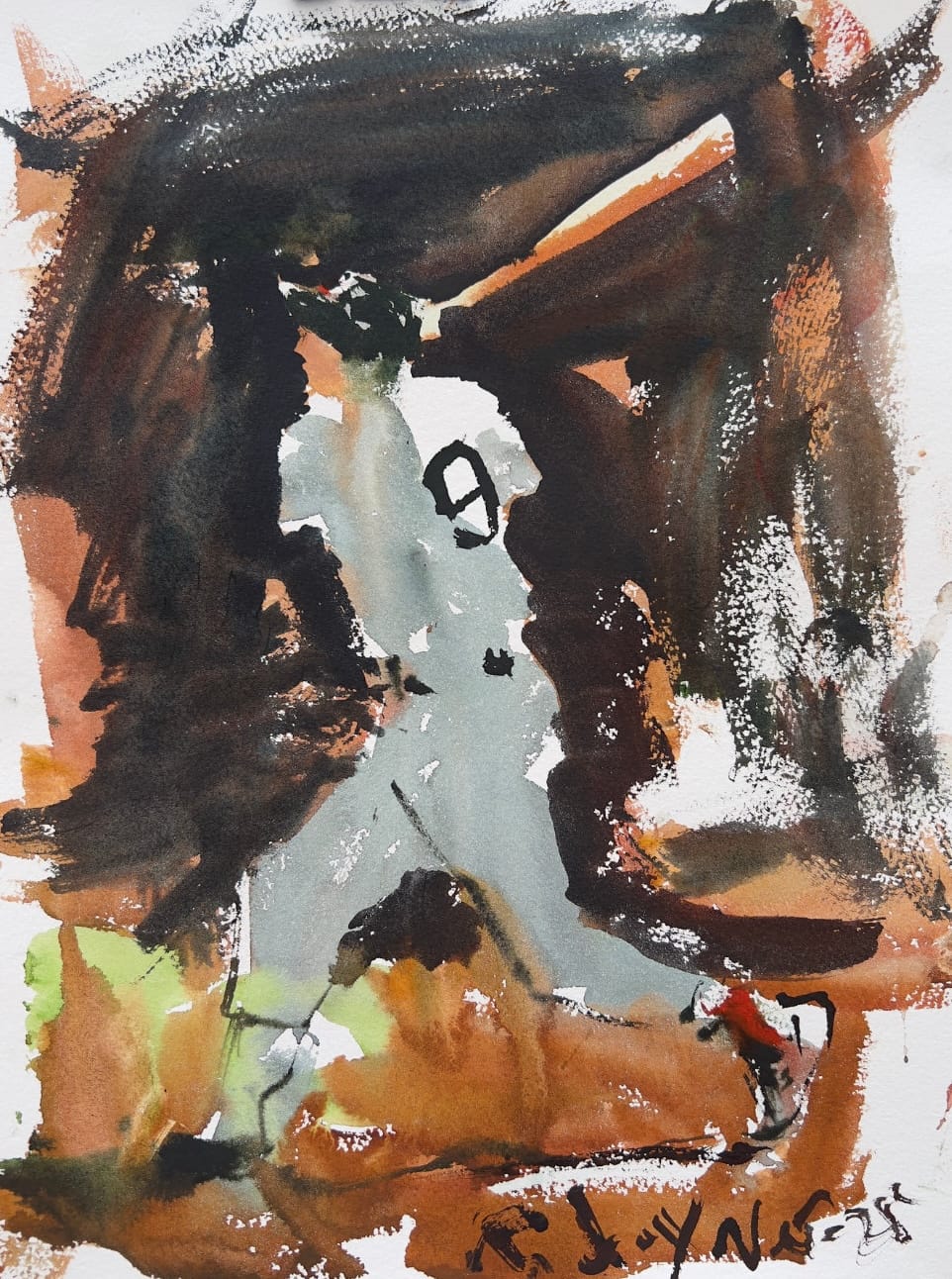
What the Viewer Actually Sees
A successful expressive painting might look somewhat chaotic or feel like the artist was having a great time painting. But here's the key: the viewer can still recognize the subject. They can tell it's a harbor scene or a still life arrangement, even though it's painted with obvious freedom and energy.
More importantly, viewers sense that emotional connection - that the artist was feeling something genuine while making the work. This authentic engagement transmits through the painting in ways that calculated "expressive" techniques never can.
Study the image above: The painting feels energetic and spontaneous - like I was having a genuine experience while making it - but you can still identify the figure and sense of movement. This balance between expression and recognition is what makes loose baseball painting successful.
The Paradox of Expression
The paradox is this: the more you try to be expressive, the less expressive your work becomes. Real expression happens when you're so focused on the painting itself - its colors, relationships, problems, and possibilities - that your authentic responses emerge without conscious effort.
This is why foundation skills matter so much. They free you from worrying about basic competency so you can focus on genuine response to what's happening on your canvas.
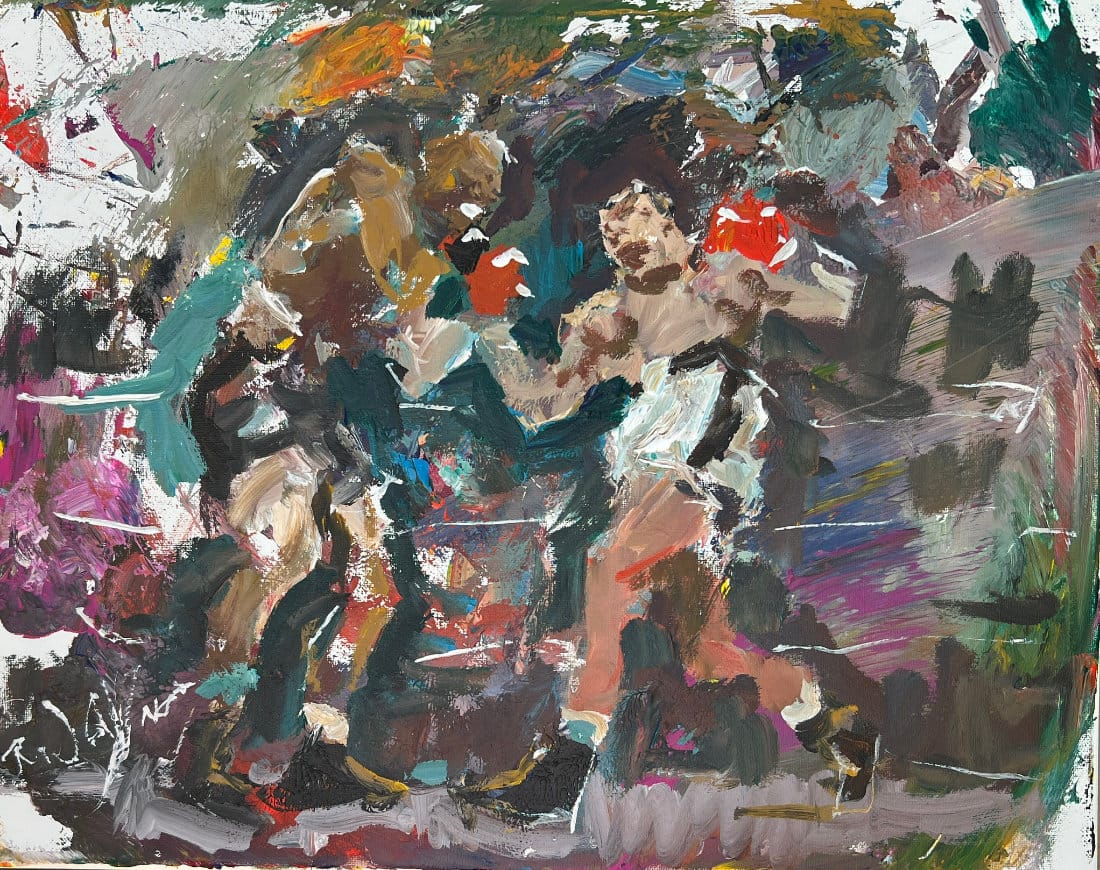
Beyond Technique
Expression isn't about learning to make certain kinds of marks or using particular color schemes. It's about developing enough skill and confidence to respond authentically to your painting process.
When you have solid drawing skills, understand color temperature, and grasp basic composition, you can afford to be spontaneous. When something feels right in the moment of painting - a color relationship, a brushstroke placement, a decision to leave an area rough - that intuitive response often creates more authentic expression than careful planning ever could.
Study the image above: Expression here comes from authentic engagement with the subject matter - capturing the physical intensity and emotional drama of boxing. The paint application serves that deeper purpose rather than showcasing particular techniques. Expressive boxing art happens when everything lines up!
The Natural Emergence
The most expressive paintings feel inevitable, like they couldn't have been painted any other way. That's because they emerged from the artist's genuine responses to the specific challenges and opportunities that arose during the painting process.
You can't plan that kind of authenticity. You can only create the conditions where it might naturally emerge: solid skills, willingness to respond rather than control, and genuine engagement with the work itself.
Expression in painting isn't a technique you learn - it's what happens when skill, confidence, and authentic engagement come together naturally in the painting process.




